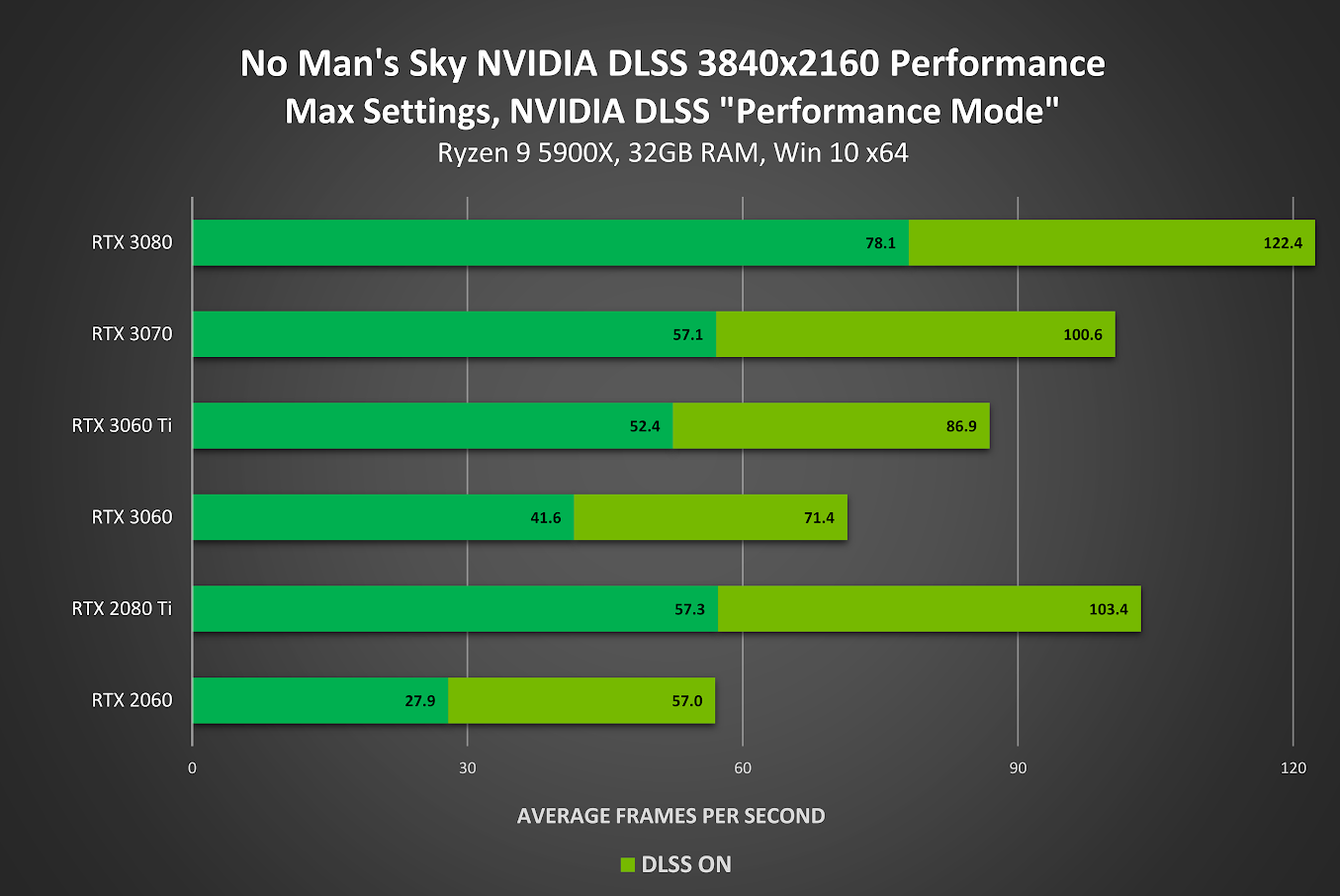Nvidia's DLSS Reaches VR With "No Man's Sky" and Two Other Titles
Nvidia today announced that Deep Learning Super Sampling (DLSS) has made the jump to VR thanks to support from No Man's Sky, Wrench, and Into The Radius.
The company said "DLSS doubles your VR performance at the Ultra graphics preset and maintains 90 FPS on an Oculus Quest 2 with a GeForce RTX 3080" in No Man's Sky, boosts Wrench's performance up to 80%, and "greatly reduces shimmering and stair-stepping on objects and foliage" in Into The Radius via improved anti-aliasing.
Here are Nvidia's performance results for the VR edition of No Man's Sky with and without DLSS enabled. Note that actual improvements will vary by system, driver version, and the whims of whichever higher being decides the exact number of frames per second a given system can provide in a particular title.

DLSS seems like a natural fit for VR. Nvidia developed the technology in an effort to improve performance and presentation, both of which are critical to games played on a pair of displays held mere inches away from the player's eyeballs. Any improvement to either of those factors make for a better VR experience.
Six other titles will also introduce DLSS support this month: Amid Evil, Metro Exodus: PC Enhanced Edition, Everspace 2, Aron's Adventure, Scavengers, and Redout: Space Assault. Nvidia said the games saw performance bumps from 40% (Scavengers) to 100% (Metro Exodus) and that several will offer ray-tracing support as well.
These additions bring the total number of DLSS-compatible titles to 50 while simultaneously expanding the technology to VR. Its continued growth seems all-but-inevitable thanks to new integrations with Unreal Engine, Unity, and potentially the next Nintendo Switch making it more appealing than ever to game developers.
Nvidia should soon have some competition, in the form of AMD's FidelityFX Super Resolution. That's supposed to provide a cross-platform alternative to DLSS that works on hardware from AMD, Intel, and Nvidia alike rather than being exclusive to Nvidia hardware that features the company's RTX Tensor Cores.
Get Tom's Hardware's best news and in-depth reviews, straight to your inbox.

Nathaniel Mott is a freelance news and features writer for Tom's Hardware US, covering breaking news, security, and the silliest aspects of the tech industry.